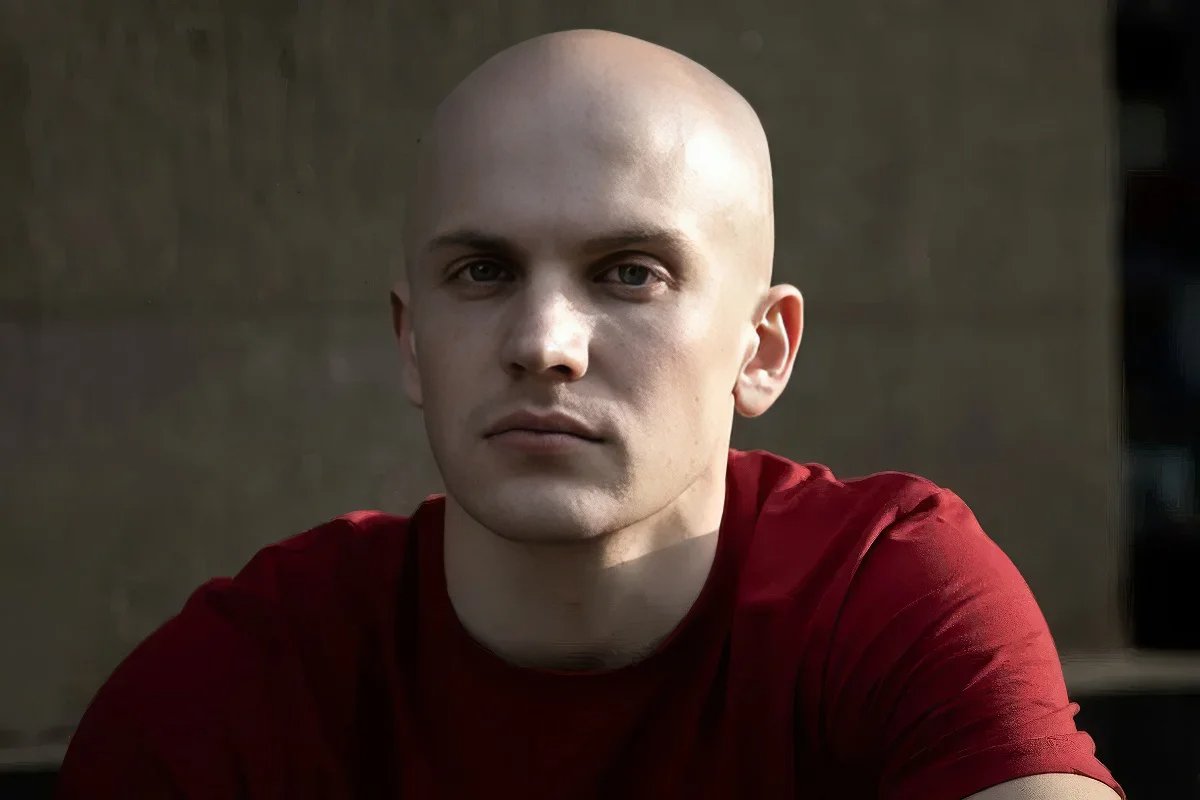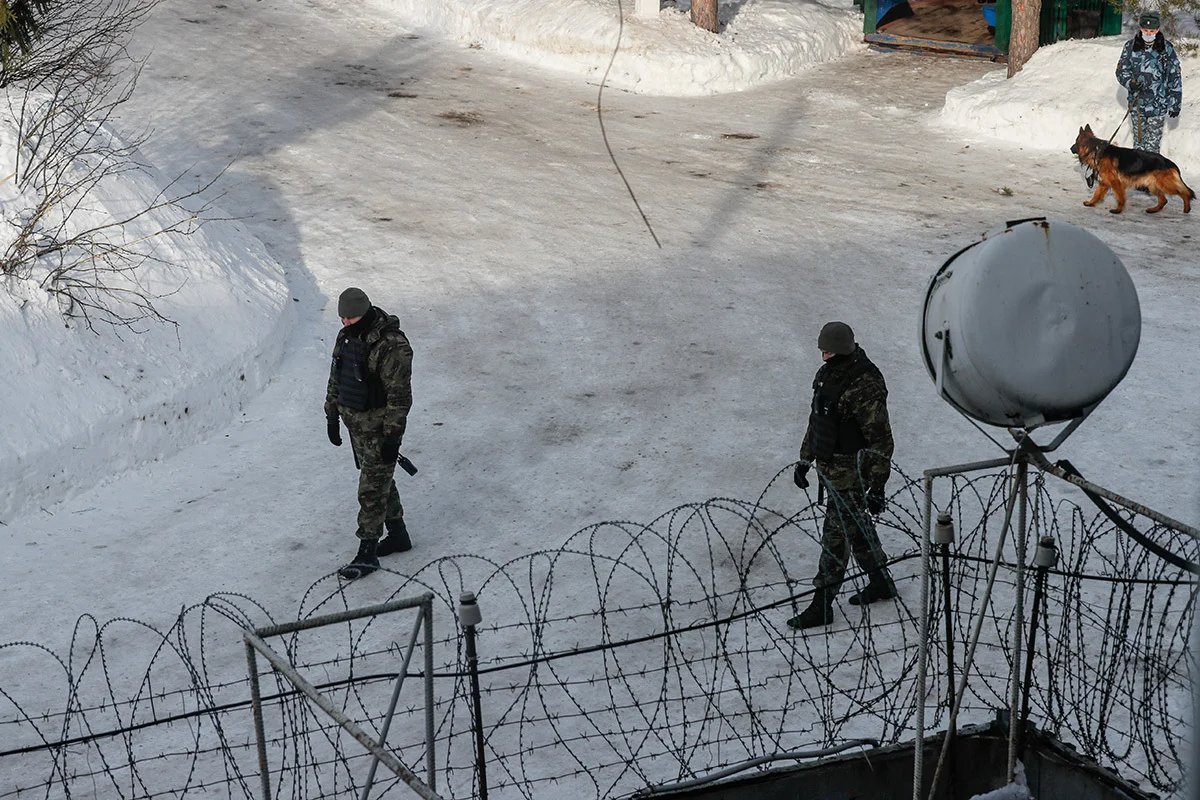While the circumstances around Alexey Navalny’s sudden death in an Arctic penal colony earlier this month remain unclear, the brutal conditions he experienced in the facility’s punishment cells where he spent over 300 days undoubtedly affected his health.
Separate units within Russian prisons with much harsher conditions, punishment cells, often translated into English as solitary confinement, are often far from solitary and are used to hold multiple prisoners at once in some cases.
“A concrete box of six or seven square metres, with nothing but a stool, a sink, a hole in the floor instead of a toilet and a bed strapped to the wall so you can’t lie down on it,” was how Yulia Navalnaya described her late husband’s cell in a recent video.
The tiniest infraction of the rules can be used as grounds for sending somebody to a punishment cell, while in some cases no reason is given at all, and their use by the prison authorities to put pressure on political prisoners is on the increase, with Russian human rights watchdog OVD-Info documenting at least 40 individual cases in which prisoners sentenced on politically motivated charges were sent to punishment cells in 2023.
Jailed opposition politician Vladimir Kara-Murza, who is serving 25 years for “treason”, was sent to a punishment cell for rule infractions at least five times in 2023, causing the significant deterioration of his health.
The law limits a punishment cell term to 15 days, but prison officials tend to bypass this restriction by adding a new term upon an inmate’s release, citing new violations. Novaya Europe asked former political prisoners to describe their first hand experiences of these cruel horrors.
Vyacheslav Kryukov: 45 days in punishment cells
Youth activist Vyacheslav Kryukov was arrested on extremism charges in 2018 and sentenced to six years in prison two years later. Kryukov was released in October 2022 after spending a total of four years in detention.

Vyacheslav Kryukov. Photo: EPA-EFE/SERGEI ILNITSKY
“In 2021 I was transferred to the IK-2 penal colony in the southwestern Rostov region of Russia. After a period of quarantine they placed me in a punishment cell for 15 days.
They put me there because I was sentenced on a political charge. After the first term, I immediately received another 15 days. After that, I had a third 15-day stint — a total of 45 days in a row.
In a punishment cell, the daily ritual is harsher than in the rest of the prison. You get to go for one walk each day, but besides that there are no activities, no letters, no calls. Visitors are prohibited.
Punishment cells usually hold two or four prisoners, but sometimes it can reach six or even eight. It’s okay if you’re with normal guys, but often you’re with real criminals. Being stuck with them can be traumatic.
It’s harmful for your physical health too; you’re supposed to just stand there all day. Sometimes you can sit or lie down on the floor during the day, but if you are in a high-security prison they won’t let you. You don’t get any extra food or handouts, only poor-quality gruel.
The hardest times of the year to be in punishment cells are spring and autumn when they turn the heat off. It was extremely cold. In my first 15 days, my kidneys almost froze. Days after my return to the main prison, I could still feel the frostbite on my back. And then there’s the restlessness. The cell is so small you can hardly move — to the point that it really harms your health. After my third stint I was told I looked like I had been in Auschwitz.
In punishment cells, your quality of life is much worse than in the main prison. And they send prisoners to punishment cells whenever they feel like it, regardless of whether the person broke a rule. It’s a common practice.”
Ivan Astashin: over 30 days in punishment cells
In 2012, Ivan Astashin was sentenced to 13 years in a high-security prison for his participation in a protest that damaged an FSB office in Moscow. He was charged with orchestrating terrorist attacks, intentionally damaging property, and illegally storing and manufacturing weapons.
During his imprisonment he spent more than a month in punishment cells: in 2016 he was given five days in the cells as punishment for waking up late, in 2017 he got three days for exercising in the wrong area, and in 2019, seven days for lighting a match at night.
In September 2020, Astashin’s term was reduced to 9 years and 9 months, and he was released. In August 2022 he left Russia.

Ivan Astashin. Photo: Anna Artemyeva / Novaya Gazeta
“The cells I stayed in held from two to seven people. Technically, cells must be two square metres per person, but that rule often isn’t observed. Once I was placed with six other men in a cell that was 13.5 square metres.
We had two big problems: dealing with the cold and not being able to take naps during the day. We couldn’t sleep on the floor because it was crossed with cold strips of steel to keep prisoners from dismantling it. So we slept sitting on stools with our heads on the tables, sometimes resting on a book for comfort.
Punishment cells are often in basements. When they turn the heat off in summer and autumn it gets very cold. Even in winter, actually, the windows let the cold air in and we didn’t have any extra clothing to wear. I would walk around the cell to warm up my feet. My feet would get warm, but my head would be cold, so I’d pull my jacket over my head to warm it up. But then my feet would freeze again.”
Anonymous political prisoner: 33 days in punishment cells
“I was put in punishment cells three times, for eight, 10 and then 15 days. It was a brutal experience — and can be much worse if you’re there in winter. I was in a prison in the north, but in Yamal, where Alexey Navalny was, it’s even colder.
The prison officials intentionally underheat the punishment cells so that the prisoners are uncomfortable. They keep the temperature at about 17 degrees; when you’re there day and night for several days, your body gets very cold. Other prisoners told me about prisons where they keep the temperature at 15 or even 10 degrees. When your body is not getting any vitamins and is constantly exposed to such cold temperatures, you can get really ill.
If you’re young and healthy, your body can deal with the stressful conditions. But for someone older, or someone with a compromised immune system, or someone who has been poisoned like Navalny, it’s harder for the body to cope. I saw older or immunocompromised people get sent to the punishment cells, only to get really sick and end up in the prison hospital.
This is in addition to the psychological torture. You’re in such a confined space: living in a punishment cell is like living in a large toilet cubicle. You really cannot gloss over the psychological effects.”

Prison guards in a Vladimir region colony. Photo: Yury Kochetkov / EPA-EFE

